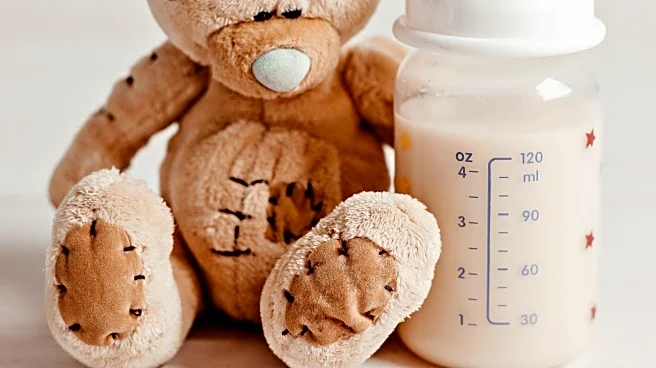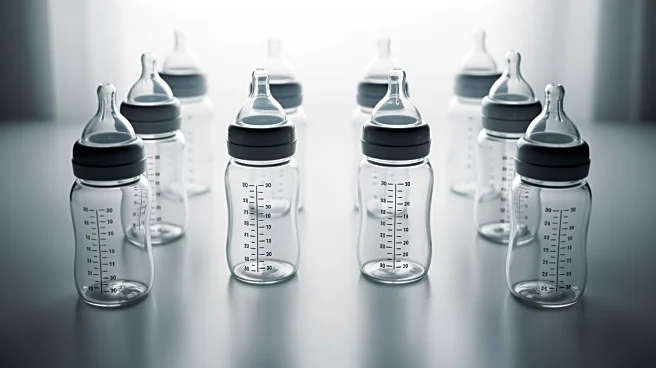What's Happening?
Recent discussions among health and materials experts have highlighted concerns regarding the use of plastic containers in microwave ovens. While many plastic containers are labeled as 'microwave safe,'
this designation does not guarantee the absence of harmful chemical leaching when heated. Li Li, an associate professor at the University of Nevada, Reno, emphasizes that microwave-safe labels are not federally certified and may not fully protect against health risks. Damaged containers, regardless of material, can leach chemicals into food, and sudden temperature changes, such as moving from freezer to microwave, can cause container damage. Experts recommend using glass and ceramic containers, which are generally safer due to their resistance to heat transfer and lack of organic chemical additives.
Why It's Important?
The potential health risks associated with microwaving plastic containers are significant, as microplastics and chemicals like BPA can leach into food, posing endocrine-disrupting effects. This issue is crucial for public health, as microwaves are widely used for food preparation. Consumers may need to reconsider their use of plastic containers, opting for safer alternatives like glass and ceramic. The broader impact includes increased awareness and potential shifts in consumer behavior towards safer food storage practices, which could influence manufacturing standards and regulatory policies regarding microwave-safe labeling.
What's Next?
As awareness grows, consumers may demand clearer labeling and safer materials for microwave use, potentially prompting manufacturers to improve testing and transparency. Health experts might continue to study the effects of microplastics on human health, leading to more comprehensive guidelines. Regulatory bodies could consider implementing stricter standards for microwave-safe labels, ensuring consumer safety. Additionally, educational campaigns may be launched to inform the public about best practices for microwave use, emphasizing the importance of avoiding damaged containers and sudden temperature changes.
Beyond the Headlines
The discussion around microwave safety extends beyond immediate health concerns, touching on environmental issues related to plastic use and disposal. As consumers become more conscious of the risks, there may be a push towards reducing plastic waste and exploring sustainable alternatives. This shift could influence cultural attitudes towards convenience and safety in food preparation, encouraging a more cautious approach to using technology in everyday life.












